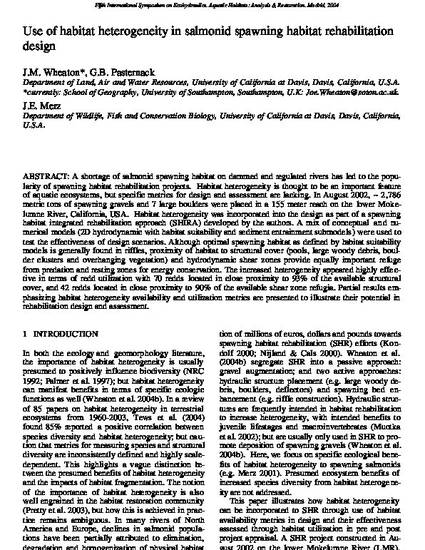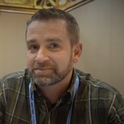
Contribution to Book
Use of habitat heterogeneity in salmonid spawning habitat rehabilitation design
Fifth International Symposium on Ecohydraulics. Aquatic Habitats: Analysis & Restoration. Madrid,
(2004)
Abstract
A shortage of salmonid spawning habitat on dammed and regulated rivers has led to the popu- larity of spawning habitat rehabilitation projects. Habitat heterogeneity is thought to be an important feature of aquatic ecosystems, but specific metrics for design and assessment are lacking. In August 2002, ~ 2,786 metric tons of spawning gravels and 7 large boulders were placed in a 155 meter reach on the lower Moke- lumne River, California, USA. Habitat heterogeneity was incorporated into the design as part of a spawning habitat integrated rehabilitation approach (SHIRA) developed by the authors. A mix of conceptual and nu- merical models (2D hydrodynamic with habitat suitability and sediment entrainment submodels ) were used to test the effectiveness of design scenarios. Although optimal spawning habitat as defined by habitat suitability models is generally found in riffles, proximity of habitat to structural cover (pools, large woody debris, boul- der clusters and overhanging vegetation) and hydrodynamic shear zones provide equally important refuge from predation and resting zones for energy conservation...
Keywords
- heterogeneity,
- salmonid spawning,
- habitat rehabilitation
Disciplines
Publication Date
2004
Editor
Diego García de Jalón Lastra and Pilar Vizcano Mart ínez
Citation Information
Joseph M. Wheaton. "Use of habitat heterogeneity in salmonid spawning habitat rehabilitation design" Fifth International Symposium on Ecohydraulics. Aquatic Habitats: Analysis & Restoration. Madrid, (2004) p. 791 - 796 Available at: http://works.bepress.com/joseph_wheaton/29/
